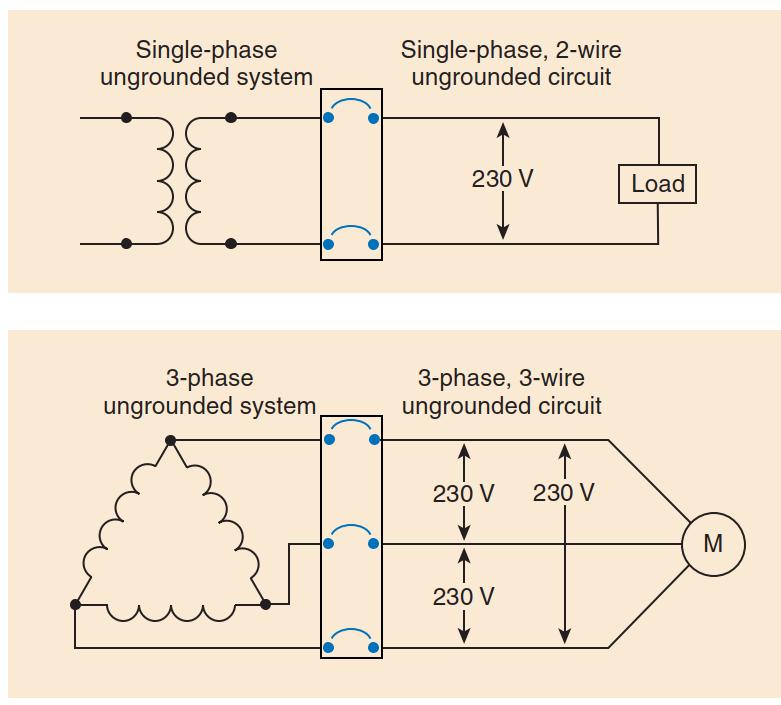Article 2.10.1.5 (B) - Multipole Common Trip Circuit Breaker Required
Philippine Electrical Code 2009 Article 2.10.1.5 Identification for Branch Circuits Section (B) Disconnecting Means states that:
Each multiwire branch circuit shall be provided with a means that will simultaneously disconnect all ungrounded conductors at the point where the branch circuit originates.
FPN: See 2.40.1.15(B) for information on the use of single-pole circuit breakers as the disconnecting means.
This statement means that in a multiwire particularly in mutli-phase circuits, all the ungrounded conductor shall be disconnected from its power source at the same time. Examples of circuits that require multipole common trip circuit breakers are shown in Figure 1

Article 2.40.1.15 - Common Trip Circuit Breaker Exceptions
Philippine Electrical Code 2009 Article 2.40.1.15 provides exceptions in the use of multipole common trip circuit breakers. Thus single-pole circuit breakers are allowed to be used.
Circuit breakers shall open all ungrounded conductors of the circuit both manually and automatically unless otherwise permitted in 2.40.1.15(B)(1), (B)(2), (B)(3), and (B)(4).
(1) Multiwire Branch Circuits. Individual single-pole circuit breakers, with identified handle ties, shall be permitted as the protection for each ungrounded conductor of multiwire branch circuits that serve only single-phase line-to-neutral loads.
(2) Grounded Single-Phase Alternating-Current Circuits. In grounded systems, individual single-pole circuit breakers rated 115/230 volts ac, with identified handle ties, shall be permitted as the protection for each ungrounded conductor for line-to- line connected loads for single-phase circuits.
(3) 3-Phase and 2-Phase Systems. For line-to-line loads in 4-wire, 3-phase systems or 5-wire, 2-phase systems, individual single-pole circuit breakers rated 115/230 volts ac with identi‐ fied handle ties shall be permitted as the protection for each ungrounded conductor, if the systems have a grounded neutral point and the voltage to ground does not exceed 115 volts.
(4) 3-Wire Direct-Current Circuits. Individual single-pole circuit breakers rated 125/250 volts dc with identified handle ties shall be permitted as the protection for each ungrounded conductor for line-to-line connected loads for 3-wire, direct- current circuits supplied from a system with a grounded neutral where the voltage to ground does not exceed 125 volts.

